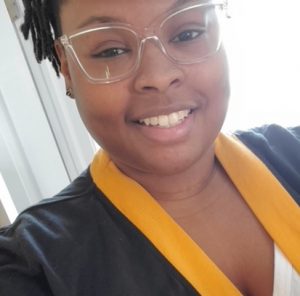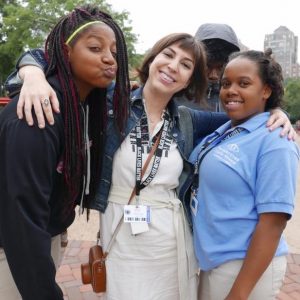As part of our Living History Education Program, we’re fortunate to collaborate with some incredible teachers and educators in bringing TimeLine’s mission into Chicago Public Schools. In honor of National Teacher Appreciation Day, we reached out to a few teachers currently working with Living History in their classrooms to talk about the program, theatre, the arts, and the role of all three in their classrooms. We asked each of them the following questions:
- What’s a memorable moment you had with Living History?
- What do you hope students walk away with at the end of a Living History residency?
- How do you think arts and education support each other?
You’ll see excerpts of their responses on our social media pages today, but we hope you’ll also read their full responses below. Working with students to bring the lessons of history into resonance with our present and future is an incredibly important part of TimeLine’s mission, and we’re so grateful to have Joann, Blair, and Rachel as partners in that work!
Joann Lugardo
One of the fondest memories that I have about working with TimeLine was when they introduced my students to a play called Boy. After one week of team building and promoting a safe space, my students were performing scenes from the play. I’ll never forget seeing my student, Aaliyah, act out a few scenes for the lead role in the play. She delivered the lines almost exactly as it was performed on stage by the actual actor, and I witnessed her peers encourage and praise her for the first time. This was a life-changing experience for Aaliyah, because she was never offered an opportunity to actively participate in a play until TimeLine stepped into our classroom.
I want my students to be exposed to theatre arts education in the hopes of seeing them step out of their comfort zones and increase their confidence. Theatre arts education allows each student to demonstrate their academic strengths in a variety of ways. The kinesthetic and visual learners are given the rare opportunity to engage in the material in a way that helps them learn best. Overall, students tend to retain a lot of the information presented, because they are having fun and are actively engaged.
Blair Savage
A memorable moment with Living History was when the students were realizing the communities that they belong to. This stuck with me because it has allowed me to learn about the students. With school being remote it has been hard to make connections with the students and TimeLine has given me the opportunity to learn about the students.
I hope that our students walk away with a sense of self. Also knowing that although we have many differences, we are all connected in some way that helps us make connections with people from different communities.
Education and Art go hand in hand. Art can be used to assess what has been learned. Art allows students to be creative and provides student choice, which will increase engagement.
Rachel Swain
Every year there are so many incredible moments. One of my favorites was during the Kill Move Paradise production when Charles [Andrew Gardner] was entering the stage and my students burst out clapping and cheering for him. It highlighted for me the relationships that teaching artists build in such a short time. It also demonstrates what an impact theater can have on people. I think about that moment often as one of my favorites not just with TimeLine, but in teaching in general. This year with remote learning, it’s been so amazing to watch students who might normally observe class actively engaging and I think that says a lot about the incredible program Timeline has developed to meet the moment.
I hope students will be thoughtful about their identity and their place and power in their community. I also hope that students will feel some curiosity about theater and seek to continue engaging with TimeLine. I also just generally hope students will say they had fun and they learned something about themselves and each other.
I think the arts are part of a comprehensive educational program. In this age, with so many arts programs being pushed to the side, it seems more important than ever. I firmly believe that it’s just as important to develop artistic creativity as it is to learn math or science or reading, because it is through the arts that we can learn to look closely at our world, hold a mirror up to our lives, identify problems and solutions, engage in worthwhile dialogue about ourselves, and ultimately appreciate the beauty in our world.
National Teacher Appreciation Day in the United States is celebrated annually on Tuesday during the first full week of May.

